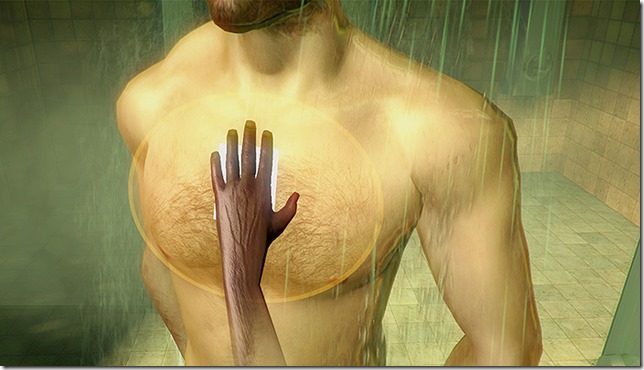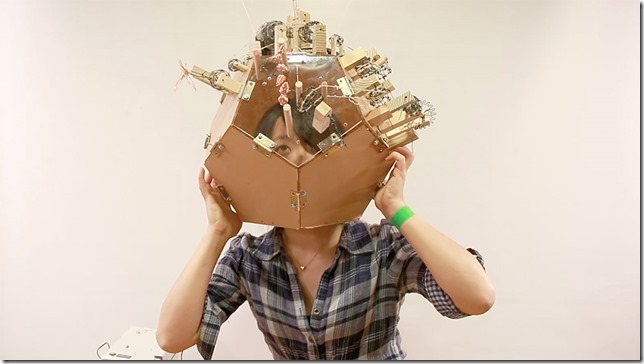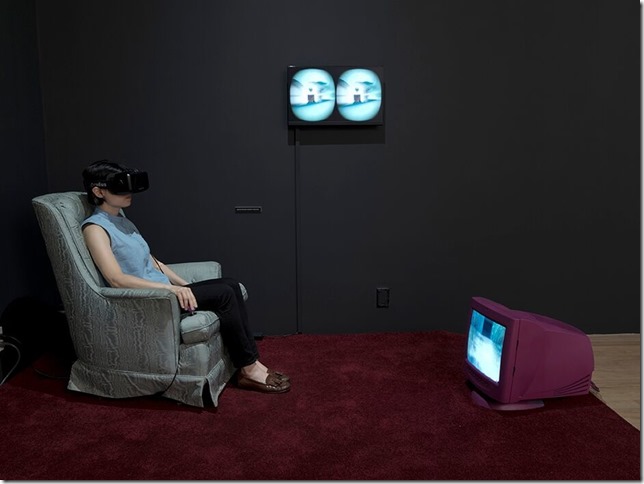The Golan Levin led Art && Code conference on VR and AR has just ended at Carnegie Mellon. It’s an amazing conference that reminds me of the days of MIX in terms of creativity and seriousness. I have always secretly felt that there’s a strong correlation between gender parity at conferences and the quality of the conference — something MIX had to some degree and Art && Code has strongly.
I don’t mean to be political or controversial, though. I just find this more enjoyable than //build or Ignite, which are valuable in other ways.
A serious concern that bubbled up to my consciousness at Art && Code, however, is the plight of men in tech. Something has happened to us, I think, that in our gender isolation, we’ve become dull and less playful. Our very notions of what is fun in tech is limited and diminished and we don’t even realize it. We all go about doing our best Steve Wozniak pretending to be Steve Jobs impressions and talk about passion in a way that makes it sound like a wet rag we found in an alley, perpetuating the nerd on nerd self-violence that is choking the nascent mixed reality industry. And I think this is unfair.
Part of the reason for this is probably the high cost of the tech we work with. When the gear is expensive, we feel a responsibility to appear more serious. We worry that appearing to be having fun doing what we do requires justification. A great example is Rene Schulte’s justification of wig caps for his company’s HoloLens demo when the only explanation needed should have been that the hololens is gangsta and our only legitimate response should have been that he needed more bling.
My favorite talk at this conference was about political games by Robert Yang. The more I think about it the more profound it seems. He explores gender roles and race relations with a first person adventure that takes place in a gay spa. Mostly due to misunderstandings about what he is trying to do, his games are banned from twitch and he gets a lot of hateemails. His oeuvre of games is accused of having found rock bottom in the uncanny valley (though this is more a description of his aesthetic, I feel, rather than the success of his experiments).
I talked to him for a bit in the buffet line and he said he’s considered putting a contextual/researchy explanation in front of his games but also thinks it ruins the integrity of his bathhouse game and I agreed strongly.
And maybe sex games are still a step too far for us — but we should at least be able to be more playful and fun and willing to create apps that are exploratory rather than just cookie-cutter commercial translations of existing web apps.
I think the cause of our predicament is the homogeneity of the people currently doing More Personal Computing development. The symptom and effect is the small number of women in this field. Hololens is, if anything, even more narrow in this way than windows development in general despite being more inherently innovative and transformative.
But what’s the point of transformation if we create a NUI world that has all the problems institutionalized in our current one?
As developers we have a limited ability to affect this — mostly because of lack of time and the other usual but legit reasons.
Where we can have an influence though is by by creating diversity in our own thinking. I can make this even easier — we create diversity by having more fun in what we do. If what we do looks more fun and has more joy, it will attract more diverse people who will want to use it for artistic and even subversive purposes and, in turn, make what we do even more fun. It’s a virtuous circle that gives back a hundred fold.
And while secretly my criteria for when we’ve succeeded with diversity is when we get a Robert Yang gay sex game on the HoloLens, a more modest one — just getting a non-zero number of women developers into the hololens dev community and making sure they have a voice — would also be great.
For what it’s worth, VR has the same institutional problem. But this is a fresh start and we can do better.
My modest proposal to accomplish this starts with a plea to Microsoft and other MR vendors like Meta and Magic Leap. You have plans or already have implemented plans to provide devices and developers to major large enterprises like NASA in order to build mixed reality experiences. Why not divert a portion of these resources to some of the new media artists linked in this post so we can see the true potential of Holographic Computing to change, challenge and improve our social world rather than simply find new ways to channel capital?
I understand that to some extent it’s a matter of which comes first, the chicken or the portrait of the chicken. I would simply plead with you, the mighty corporate curators of mixed reality, to this time choose the portrait of the chicken first. It’s the truer vision.



